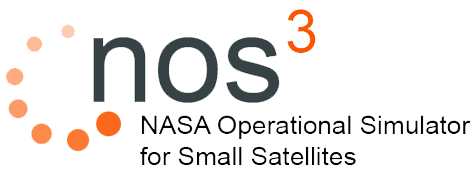NASA Operational Simulation for Small Satellites
The NASA Operational Simulation for Small Satellites (NOS3) was developed by the JSTAR team in response to the STF-1 mission. NOS3 allows for multiple developers to build and test flight software with simulated hardware models. The flight software has no knowledge that it’s not actually being run in space, as it obtains all the same inputs that it would during nominal operations.
NOS3 builds upon the NOS middleware to include a full suite of CubeSat simulations on one Virtual Machine (VM) platform. It integrates a variety of components such as: Nasa’s Core Flight Software (cFS), Hardware Simulators, Vagrant, COSMOS, OIPP, and 42. Each software component is further described below:
- NOS, the core technology for NOS3, is a JSTAR developed solution for simulating hardware busses as software only busses. This component provides the connectivity between the flight software and the simulated hardware components.
- NASA’s Core Flight Software (cFS) is an open source, project independent, reusable flight software framework that is used as the base system which STF-1 flight software is developed on top of.
- Hardware Simulators are fully customizable software models of a specific piece of flight hardware that often focus on inputs/outputs of the device. Each of these models serve as virtual hardware in order to provide the flight software with an accurate representation of its data.
- Vagrant allows a computer to set up the Virtual Machine necessary to run the applications associated with the NOS3 suite.
- COSMOS is an open source ground system software developed by Ball Aerospace which is used to provide command and control of the flight software.
- OIPP is a planning tool developed by members of the NASA IV&V team that allows the ground station to know when the satellite will be in view, as well as when the satellite will be in direct sunlight. This allows the IV&V team to plan STF-1 power usage and communication times
- 42 is a NASA developed, open source visualization and simulation tool for spacecraft attitude and orbital dynamics. 42 provides magnetic field data and positional data as inputs to the magnetometer and GPS simulators.
NOS3 has been fully developed and is now an open source software—this will allow JSTAR to make this software accessible to anyone.

























